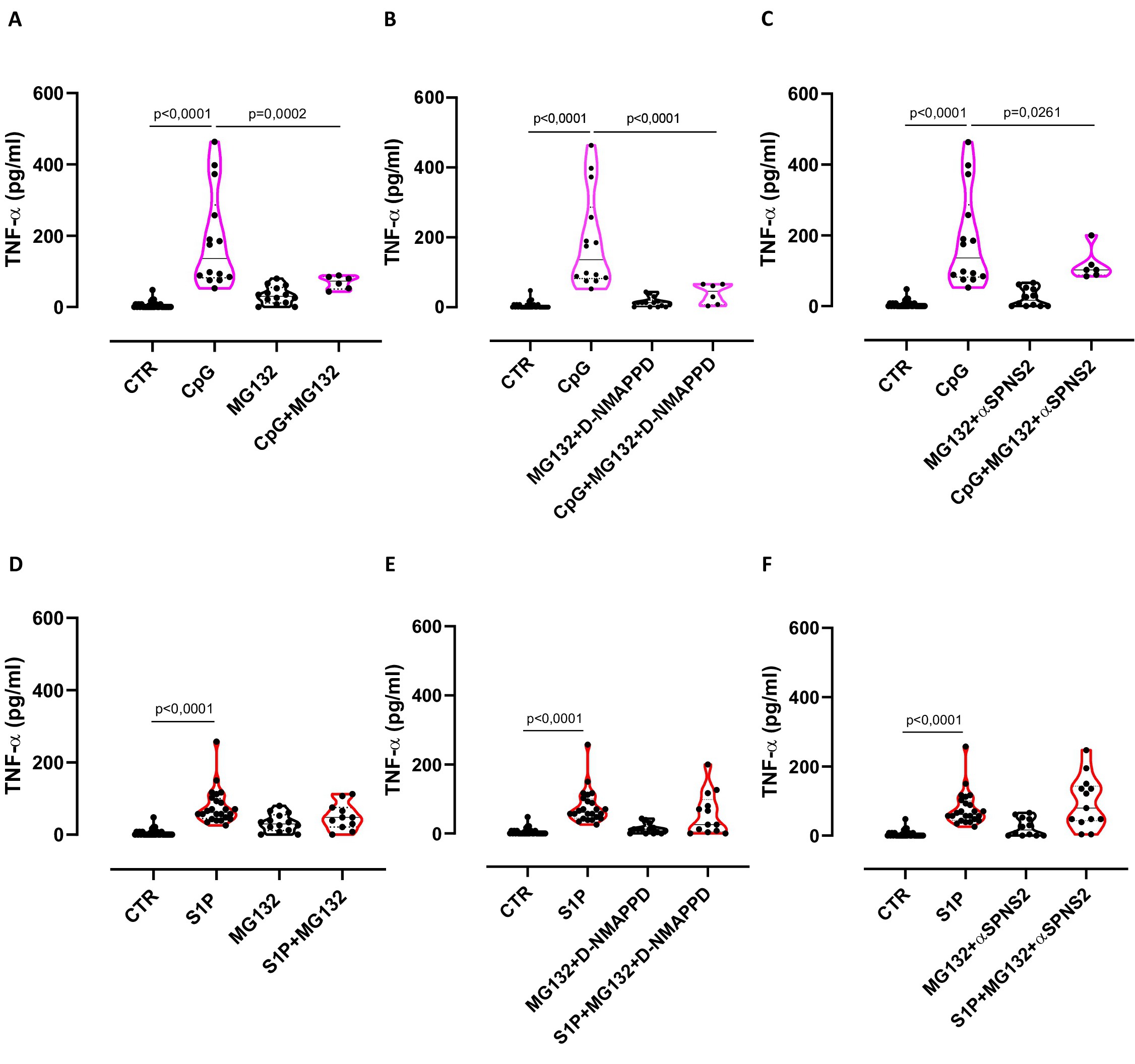Fig. 5. TNF-α release mediated by TLR9/S1P-axis is NF-κB-dependent. Lung adenocarcinoma A549 cells were stimulated with TLR9 ligand, CpG 1 Ág/ml or S1P 10nM for 8 hours and TNF-α release was evaluated. TNF-α release was significantly reduced after CpG+MG132 (A), CpG+MG132+D-NMAPPD (B), CpG+MG132+αSPNS2 (C) treatment, compared to the sole CpG addition. D) S1P-induced TNF-α release was not NF-κB-dependent. When both ceramidase and NF-κB (E) or SPNS2 transporter and NF-κB (F) were inhibited, TNF-α levels were not significantly decreased after S1P addition. Data are presented as violin plot, showing the median ▒ interquartile range. Statistical differences were assessed with Ordinary ONE-Way ANOVA followed by Tukey's multiple comparison test. Proteasome inhibitor (MG132, 10 ÁM), ceramidase inhibitor (D-NMAPPD, 5 ÁM), anti-Spinster homolog 2 antibody (αSPNS2, 10 ng/ml).
